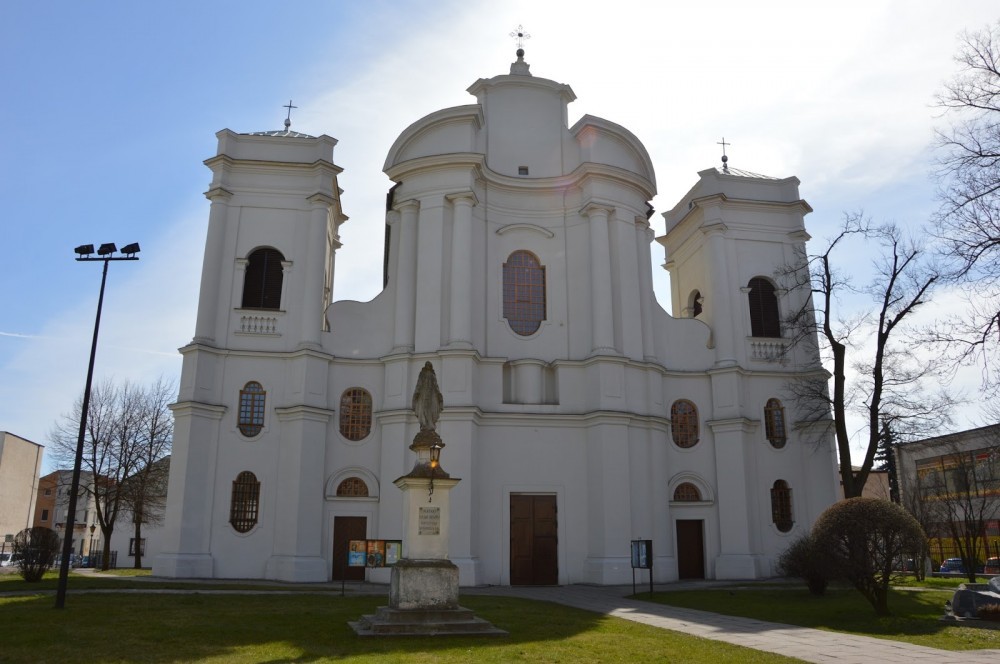Wolf’s Lair Hitler’s Bunker in Ketrzyn, Poland
Regardless of whether you are passionate about history or you are simply looking for an exciting place to visit, being in Masuria, you cannot miss the ruins of Adolf Hitler’s Former War Headquarters codenamed “Wolf’s Lair” (Wolfsschanze).
History
Hitler’s headquarters stretched over 250 hectares and was very well camouflaged. The location of this place was surrounded by forests and Great Masurian Lakes providing protection against hostile intelligence.
The complex of bunkers and military installations was built for the start of Operation Barbarossa—the invasion of the Soviet Union—in 1941.
The central German command center during World War II was the headquarters of fuehrer Adolf Hitler. Until 1941 base of operations did not have its permanent seat. The situation changed when the Third Reich began preparations for war with the Soviet Union.
Then in the autumn of 1940, a decision was made to build a permanent headquarters, which would also house the Supreme Command of the Third Reich Armed Forces (Oberkommando der Wehrmacht – OKW).
The idea of locating the headquarters in the forests near Gierłoż was presented to Hitler by eng. Fritz Todt. He managed the paramilitary Organization Todt, which was responsible for the construction of many military facilities.
Todt knew the area around Gierłoż well and was a regular visitor of the holiday home there – Kurhaus. The location chosen by him was supported by the proximity of the future military front and relative security. The area around Kętrzyn belonged to the Giżycko Fortification District. Extensive lakes and swamps constituted a natural protective barrier. The area was densely forested therefore provided excellent anti-aircraft masking.
About 200 buildings were erected in the area of ”Wilczy Szaniec,” including 80 brick and concrete buildings, wooden barracks, two airports, a power station, railway station, waterworks, and two teletype switchboards.
The most substantial type “A” shelters were created for Adolf Hitler, Martin Bormann, and Hermann Goering. Hitler’s shelter was 36 m long, 32 m wide and 10 m high, the ceiling was 8 m thick. It weighed over 50,000 tons. Goering never lived in his shelter because he did not like the quiet and harsh climate of the “Wolf’s Lair.”
The biggest problem of the lodgings was humidity and the associated development of fungi and mold. In the summer, millions of mosquitoes and flies grew in the surrounding lakes and swamps, which strongly affected the headquarters crew.
An important advantage of the location of “Wolf’s Lair” was its infrastructure. The headquarters were located just off the road Kętrzyn – Węgorzewo. Next to it ran a railway line, which was very intensively exploited during the years of construction and use of the accommodation.
Only 7 kilometers southwest of “Wilczy Szaniec” in the village of Wilamowo was an airport for passenger and liaison services. An extensive communication center was established in the headquarters to keep constant communication with all of Europe occupied by the Germans.
Around the headquarters were three concentric defense zones, and within 10 km of the central zone, the area was completely deserted. The area around the Wolf’s Lair was surrounded by a minefield during the war.
The space between the 150-m-wide fences on almost the entire perimeter was mined with anti-personnel and anti-tank mines. There were also mines hidden in glass containers, so they could not be detected by sapper devices and impossible to disarm.
It was practically impossible to attack the enemy. Immediately after the war, the demining operation of fields has begun; however, demining was very dangerous. The land was handed over after the full demining of the Wolf’s Lair on October 29, 1955.
On October 17, 2003, a plaque was unveiled in “Wilczy Szaniec” to commemorate sappers who died during the demining of the headquarter. At the plaque, dummy concrete mines were placed, modeled on the original from the Museum in Owczarnia.
Assassination attempt on Hitler
In Wolf’s Lair Hitler and his staff spent a total of about 850 days, and among the visitors were Italian dictator Benito Mussolini and Japanese ambassador Count Hiroshi Oshima.
It was in Wolf’s Lair that the famous assassination of Hitler took place. On Thursday, July 20, 1944. at exactly 12:42, a powerful explosion shook the quarters, window frames, and broken branches flew in the air. The delayed ignition bomb was brought by colonel Claus von Stauffenberg from Berlin. The explosion did not kill Hitler; however, he suffered minor injuries.
Wolf’s Lair demolition and destruction
Soviet and Allied hostile intelligence never managed to find the location of the headquarters. Even the local people of Gierłoż, intrigued by the busy life in the nearby forest, did not know what was really hiding there.
In the autumn of 1944, the Red Army approached the borders of East Prussia. Hitler left the headquarters in the “Wolf’s Lair” on November 20, 1944. Just before the Red Army entered, on the order of Field Marshal Wilhelm Keitel, on the night of January 24-25, 1945, the buildings of the “Wolf’s Lair” were blown up.
It was a massive undertaking that German sappers could not cope with due to a lack of time and an adequate amount of explosives. Hitler’s shelter was the most damaged. Others with smaller or larger damages are still standing today.
This area was plundered in the post-war times by the surrounding population who used what they could for their own economic purposes.
Wilczy Szaniec is located in Gierłoż near Kętrzyn, and today, even though the headquarter was blown up by retreating Germans – it is a great tourist attraction, visited by almost a quarter of a million tourists a year. Bunkers still hide many secrets and impress with their size, scale, and solidity.
Visiting the Wolf’s Lair
The Wolf’s Lair can be visited alone, but it will be more valuable to take a guide. Local tourist guides will help you better understand the place, gaining some unique and exciting knowledge about history, architecture and find out everything about this place. There are many legends here, so it would be great to learn everything from someone who deals with these things every day.
Visiting Wolf’s Lair is a walk in the woods. Even in hot weather, it is not bad here, and inside the bunkers, there is also a pleasant coolness. Mosquitoes can fly, so it’s worth stocking up a repellent. For sure, this place will impress everyone, even if someone has not been interested in history so far. For once, it’s worth going there. Walking is easy and pleasant.
Opening Hours & Admission Prices
- Entrance – 15 zł
- Entrance for kids and students – 10 zł
- Children up to 6 years – free
- From April to September- Everyday 8:00 – 20:00
- From October to March- Everyday 8:00 – 16:00
- Parking available on site.
Check out this post: 10 Top Things To Do in Olsztyn the capiatl of the Polish Lake District.






2 Comments
sabrinamou
I truly need to initially value your exertion in assembling this incredible site and composing this article. I really liked your article. I like to traveling. As far as I know, Poland is a very beautiful country and especially beautiful in winter. I wished that if I ever went to Poland Country I would definitely go to Wolf’s Lair Hitler’s Bunker. I didn’t know much about Wolf’s Lair, but I learned a lot by reading your article. I think this article will benefit everyone. Thanks for sharing a useful and informative post.
Nimrodngy
My passion is to travel and at the same time to read wonderful articles as you have here. It is very difficult to find a full article with so much useful information and especially historical stories about certain places. Poland is one of my favorite countries and this year I set out to get here. Wolf Lair’s is amazing and I think the legends here and their stories are fascinating. I notice that the prices are very low considering how wonderful this place is.
I really enjoyed reading this and hope to see more articles of your. You did a great job here. Good luck!